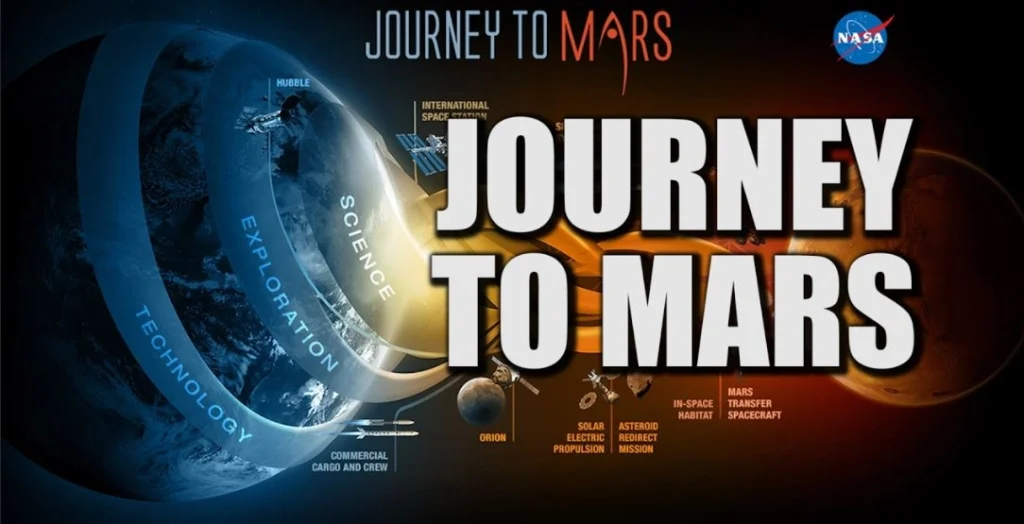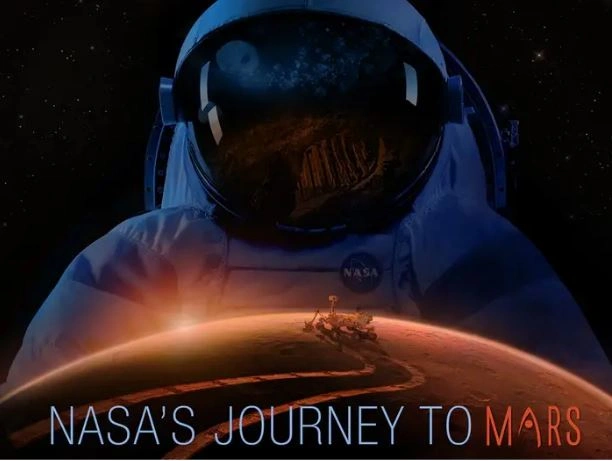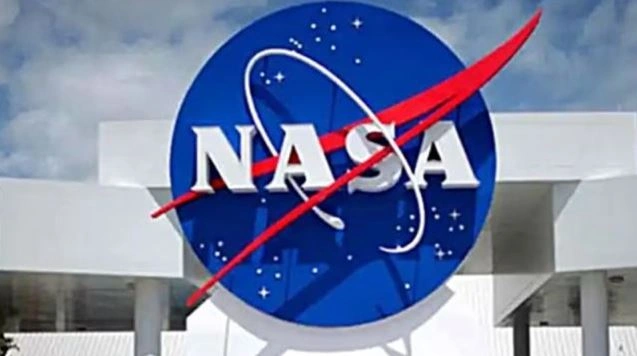NASA aims to launch its first human space exploration mission to Mars within the timeframe spanning from the mid-2020s to the early-2030s. The Mars 2025 mission integrates decades of scientific advancements with technological breakthroughs together with public awareness efforts to teach astronauts how to effectively survive on Mars. This article provides a thorough investigation of NASA’s Mars 2025 crewed mission development processes including advanced technology development and analog mission practices and public outreach efforts for inspiring young people.

https://appel.nasa.gov/2011/05/16/rapid-prototyping-and-analog-testing-for-human-space-exploration
👉Preparing for Mars : The CHEPEA Analog Missions :-.
The readiness for Mars requires complete understanding of human survival in extended spaceflight conditions as well as planetary existence on another world. Research into future space exploration focuses primarily on the Crew Health and Performance Exploration Analog (CHAPEA) program which NASA operates. NASA’s Johnson Space Center hosted Mars Dune Alpha facility which acted as habitat for four CHAPEA mission members who lived there for 378 days during the mission’s mid-2024 run.
The crew members endured 378 days of conditions that simulated Mars surface operations by facing isolation, confinement within a limited environment while managing communication delays of up to 44 minutes round trip and conducting spacewalk simulations and robotic operations and habitat maintenance and exercise and plant cultivation.
Human health and performance research under Martian conditions serves as the primary objective of the CHAPEA missions. Success from the first mission created opportunities for further missions wherein the second mission will initiate in 2025. NASA scientists and engineers use these missions to test life-support systems and operational protocols and psychological resilience under limited Mars-like conditions which helps decrease actual Mars mission risks.
During his speech NASA Administrator Bill Nelson connected the analog missions to the Artemis program through his statement about creating lasting lunar settlements that serve as bases for Mars exploration. Information gathered during the CHAPEA program will directly shape the development of Martian expedition habitats and schedules together with crew support technologies.
👉Technological Innovations : Propulsion, Life Support & More :-
NASA develops multiple technologies for Mars missions under its “Moon to Mars” program to guarantee feasibility and safety. NASA devotes significant attention to shortening Mars travel durations because astronauts must endure insufficient exposure to cosmic radiation and weightless conditions that create substantial health problems. NASA works to develop advanced propulsion systems based on sub-kilowatt electric propulsion systems for small spacecraft that will optimize Mars support system and payload delivery.
The Commercial Hall Propulsion for Mars Payload Services (CHAMPS) uses electric propulsion to enhance scientific instrument and supply delivery through cost-efficiency and flexibility. These scientific payloads will perform crucial atmospheric and environmental Mars tests by measuring pressure and temperature alongside aerosols as well as water vapor and ozone content and dust and water ice cloud behavior. Surface operations planning and crew safety depend heavily on the thorough understanding of these factors.
NASA develops new waste management solutions together with water recycling technologies while designing health monitoring systems and establishing independent resource supply chains. The technologies maintain human life on Mars through space journeys while enabling a semi-permanent human settlement on the planet. Analog mission research at CHAPEA directly benefits system development to improve system reliability and efficiency.

👉The Mars Exploration Program: A 20-Year Vision :-
The Mars Exploration Program (MEP) of NASA develops the strategic framework for robotic and human missions to Mars during the following twenty-year period. The MEP 2024–2044 Plan establishes four main scientific objectives including life detection on Mars both in the past and present together with Mars climatic and geological studies and human exploration readiness assessments.
The strategic blueprint adopts strategic methods to unite robotic operations with human space exploration by working together with external international space organizations and commercial businesses. The plan stresses the need for science-based low-cost missions to generate continuous discoveries about human missions. NASA develops a permanent exploration framework which maintains diverse science expertise and technical competence alongside international partnership promotion.
👉Public Involvement and Educational Outreach :-
NASA acknowledges public participation plays two essential roles as it motivates future astronauts and develops widespread backing for Martian exploration endeavors. The agency provides multiple educational resources which enable educators to weave NASA Mars exploration activities throughout STEM educational programs. Through In-Flight STEM Downlinks students get to talk with astronauts on the International Space Station which leads them to explore space science and exploration.
The organization commits itself to reaching all communities by conducting workshops together with outreach events which present planetary science to marginalized populations. Planetary Resources and Content Heroes (ReaCH) conducts public and workshop activities that disseminate NASA’s Mars exploration excitement to Latinx students and their families and more groups. The leadership makes continuous efforts to establish inclusive planetary science participation because they seek to develop scientists and engineers across every demographic.
👉The Human Element: Selecting and Supporting Mars Astronauts :-
Mars mission crew selection follows an intense process because the space journey requires highly demanding conditions. NASA selects CHAPEA mission astronauts from motivated U.S. citizens and permanent residents who are between 30 and 55 years old and hold STEM qualifications and professional work experience. As a requirement for selection candidates must demonstrate fluency in English and abstain from smoking to guarantee proper communication. Participants need a master’s degree from STEM disciplines coupled with work experience or equivalent training as a pilot. The program offers compensation to participants who dedicate themselves to these challenging simulations.
Protecting astronauts from mental distress together with physical health issues stands as an essential priority. Research conducted by CHAPEA about isolation and confinement conditions as well as environmental stress helps NASA develop strategies to preserve crew health throughout Mars missions. Continuous improvements in medication exercise plans along with habitat design enhancements and mental health systems evolve through analog mission assessments to optimize astronaut performance during the entire mission time.

👉Challenges Ahead and the Path Forward :-
Human space exploration to Mars stands today as one of the most intricate issues in the entire history of space travel. Solve all these requirements with innovative solutions together with detailed preparation for a mission that requires long transit times and exposure to cosmic radiation and delayed communications while needing sustainable life support capabilities. NASA has developed an incremental strategy for dealing with Mars exploration challenges through their combination of analog missions along with technological progress and use of robotic probes followed by international partnership.
The Artemis program uses lunar missions to develop vital Mars mission technologies and operational methods. A sustainable lunar operation allows NASA to conduct habitat testing along with resource management and crew medical research through a space that is comparatively near and simpler than Mars exploration.
👉Challenges faced by CHAPEA crew during their Simulated Mission :- :-
The CHAPEA mission crew endured four major challenges for their 378-day simulated Mars mission which delivered essential knowledge about human adaptability for upcoming interplanetary space travel.
1. Psychological Stressors: Isolation and Confinement :-
⏩Isolation :- The crew experienced deep-space isolation through their life in a 1,700-square-foot 3D-printed habitat that barred them from any outside world contact.
⏩Confinement :- Personal space restrictions and continued close contact with fellow crew members challenged social relationships by demanding specific methods to resolve conflicts for maintaining teamwork.
⏩Monotony :- The risk of mental fatigue increased due to repetitive work combined with controlled conditions so the crew needed structured routines and recreational activities to maintain their morale.
2. Resource Limitations and Self-Sufficiency :-
⏩Food & Water Restrictions :- The crew operated under restricted food and water availability by utilizing a self-contained system with basic pre-packaged sustenance that needed precise distribution management.
⏩Equipment Constraints :- The lack of tools and materials required crew members to become innovative by developing 3D-printed adapters for repair purposes.
⏩Energy Management :- During simulated power outages the crew needed to follow strict procedures which focused on maintaining habitat systems above all else and scientific experiments.
3. Operational Challenges: Simulated Mars Conditions :-
⏩Communication Delays :- Autonomous decisions needed to wait up to 44 minutes one way for Earth contact because this simulated the extended duration of isolation that Mars space explorers will encounter.
⏩Simulated Mars Walks :- The crew members performed spacewalk simulations using virtual reality Mars suits while they maintained control over their movements combined with operational accuracy.
⏩Crop Cultivation :- The vertical farming system served to evaluate agricultural sustainability practices when facing restricted resource availability for vegetation growth.
4. Physical and Environmental Adaptations :-
⏩Microgravity Limitations :- The crew maintained intense physical exercise routines to minimize the effects of low-gravity environment despite the inability to replicate Mars’ gravitational pull at 38% of Earth’s values.
⏩Sensory Deprivation :- Crew members developed mental health issues because sensory deprivation cut off their access to sunlight and fresh air and missing Earth’s wildlife ecosystems.
⏩Workload Stressors :- It increased when crew members performed habitat maintenance alongside scientific tests because equipment malfunctions presented unexpected pressure tests.

👉Lessons Learned for Future Missions :-
⏩Team Dynamics :- Effective problem-solving required both team members to communicate openly with each other to overcome their conflicts.
⏩Resource Innovation :- Resource adaptability became essential during Mars missions because the crew successfully converted tools into new purposes.
⏩Psychological Support :- The space crew received psychological assistance through the combination of organized activities and virtual relaxation rooms and restricted email access to relatives which reduced their sense of isolation.
The research results will directly guide NASA’s personnel selection criteria as well as habitat development and operation procedures for Artemis Moon and Mars expedition operations. Additional crew data collection through the 2025 CHAPEA mission will serve to validate the psychological findings acquired during previous missions.
👉Technological Advancement :-
NASA works on developing various advanced technologies for Mars crewed missions by concentrating on propulsion systems and entry and landing methods as well as life support systems and power generation and communication capabilities and autonomous operation capabilities. Key technological advancements include:
1. Advanced Propulsion Systems :-
⏩Nuclear Thermal Propulsion (NTP):- Through joint development with DARPA NASA works on creating Nuclear Thermal Propulsion which uses nuclear fission to heat propellant for thrust production. The high thrust capability of NTP systems allows faster Mars transit for astronauts thus minimizing their exposure to space hazards and reducing the risks of the mission. A demonstration of this technology has a planned launch date for 2027.
⏩Nuclear Electric Propulsion (NEP) :- It utilizes a nuclear reactor to create power for ionizing and accelerating xenon or other propellant substances into thrust. NEP generates higher efficiency compared to NTP although it produces lower propulsive power output. The modular radiator systems developed by NASA called MARVL lets astronauts robotically construct heat-dispersing devices in space which enables bigger propulsion systems that cannot launch through a solitary rocket fairing.
⏩Electric Propulsion for Small Spacecrafts (CHAMPS) :- NASA works on developing compact electric propulsion systems under one kilowatt for small Mars delivery missions under CHAMPS. The systems employ Hall Effect Thrusters which derive power from solar or nuclear energy to shortening delivery times and facilitating regular low-cost shipments of scientific equipment and supplies.
2. Entry, Descent & Landing Technologies :-
⏩Inflatable Heat Shields :- NASA creates inflatable heat shields which expand before atmospheric entry because they provide safety for future human and large cargo spacecraft landings on Mars. The shields offer extensive surface area for deceleration purposes and can be compressed for launch vehicle incorporation. Future Earth-based tests will determine how well inflatable heat shields function during Mars entry conditions.
3. Surface Mobility and Habitats :-
⏩Pressurized Rovers :- NASA continues to develop pressurized mobile habitats which provide astronauts with comfortable living conditions when they examine areas up to tens of miles away from the main spacecraft. The testing of these rovers will occur within the Artemis program on the Moon to provide insights for Mars rover development particularly in terrain operations and spacesuit technology integration.
4. Power Generation and Sustainability :-
⏩Nuclear Fission Power Systems :- It provides a solution for Mars because solar power becomes unreliable when dust storms and day-night cycles occur. NASA develops safe nuclear fission reactors which will supply continuous abundant power for surface operations. Testing of these systems will start with Moon missions before they transition to Mars operations.
5. Communication Technologies :-
⏩Laser Communications :- The National Aeronautics and Space Administration develops laser communications through which large data transfers including high-definition video can happen between Mars and Earth. The new data transmission technology shortens delivery times from years to weeks which provides astronaut real-time communication and enhances scientific data sharing.
6. Artificial Intelligence and Autonomous Systems :-
The implementation of AI into Mars rovers enables autonomous decision-making processes to identify minerals besides allowing autonomous navigation of terrain which also includes target selection for sampling functions without needing direct Earth monitoring commands. The mission efficiency and operational delays both improve because of this implementation.
7. Life Support and Crew Health Technologies :-
NASA creates progressive wastewater disposal solutions and water recycling technology and health tracking equipment to support astronauts during extended space missions. Results from CHAPEA and other analog studies feed into technology development to establish reliable systems that benefit astronaut health.
A combination of these technologies focuses on minimizing transit duration while creating safe conditions for Mars exploration missions and developing autonomous systems for Mars exploration missions planned for the mid-2020s and subsequent years.
👉What Role does Public Involvement Plays in NASA’s Mars 2025 Mission:-
NASA’s Mars 2025 mission directly relies on public engagement to achieve both operational efficiency and motivational value which helps NASA execute its extended space exploration objectives.
1. Recruitment for Analog Missions and Research Participation :-
NASA gets public engagement through their program of inviting volunteers to take part in ground-based analog missions such as CHAPEA (Crew Health and Performance Exploration Analog). Scientists use Earth-based facilities to replicate Mars surface conditions for testing crew health and operational as well as performance-related issues. NASA released a 2025 CHAPEA mission applicant request that required motivated U.S. citizens with STEM expertise to inhabit a three-dimensional printed Mars habitat for a twelve-month period. The collected public data becomes essential for future Mars mission planning and development of life support systems and psychological support protocols for astronauts.
2. Educational Outreach and STEM Engagement :-
NASA uses the widespread Mars exploration interest to both train students and educate both students and the wider community. NASA develops the next generation of scientists and engineers by providing educational resources as well as virtual experiences and live astronaut interactions and workshops to promote STEM learning. The program maintains popular support through public interaction since such backing is crucial to sustain financial backing and continued government backing.
3. Building Public Enthusiasm and Societal Support :-
The Mars life search along with its astrobiology mission generates worldwide public fascination. The widespread public interest in Mars exploration leads to social backing which officially supports NASA funding and makes space exploration a top policy priority. Large-scale public fascination with astrobiology leads to technology breakthroughs which enhance medical testing capabilities and ecological supervision methods alongside their core space-related objectives.
4. Promoting Transparency and Inclusivity :-
NASA achieves its missions of inclusivity by maintaining open communication through Mars exploration information and through citizen simulation programs. This method removes space missions from the realm of mystery which enables people to understand them better and creates unity among humanity. Taxpayer involvement programs bring diverse communities into space science by making scientific exploration available to everyone.
5. NASA needs public support because of the expanding influence of private space companies :-
Surveys indicate that people across the United States believe NASA should lead space exploration as private firms expand their space activities. A clear majority of Americans believe that NASA stands as a necessary organization for space exploration including Mars missions which highlights why NASA needs public backing for its programs.
The Mars 2025 mission of NASA requires public participation because it advances science research with analog missions and educates future space explorers and maintains political backing and NASA’s space leadership position. NASA collaborates with the public to make the Mars expedition a human achievement alongside its scientific and technological goals.
👉Conclusion :-
The Mars 2025 mission marks a crucial point in human history for establishing ourselves as an interplanetary species across space. NASA dedicates itself to safety along with both science and sustainability through its complete preparations including CHAPEA Mars simulation analogs and advanced propulsion systems along with life support technologies and a planned space exploration program spanning two decades. NASA remains steadfast in its mission to involve the public in every Mars exploration endeavor as well as educate citizens at all ages to generate future scientific pioneers.
Science professionals alongside engineers along with astronauts and educators and public support will achieve this remarkable Mars expedition to start a new era of space discovery.
💬Disclaimer :-
This Blog provides general information as an educational source only. The author uses their life experiences together with personal viewpoints to create all content. The author accepts no responsibility for damages or losses when users apply this information. The website information depends on your individual acceptance of personal risk when you use it. The information does not serve as professional guidance, so readers need to seek proper professional advice before implementing decisions from the provided content.